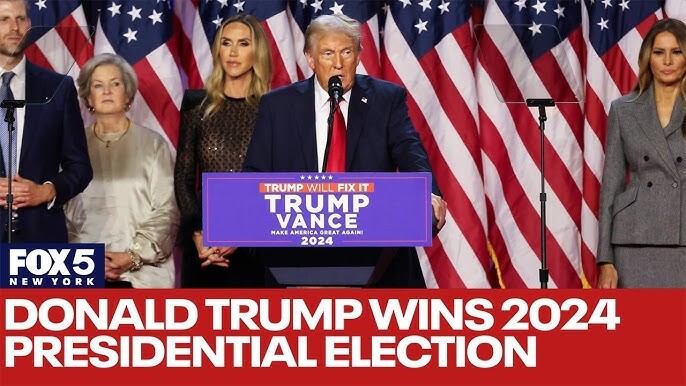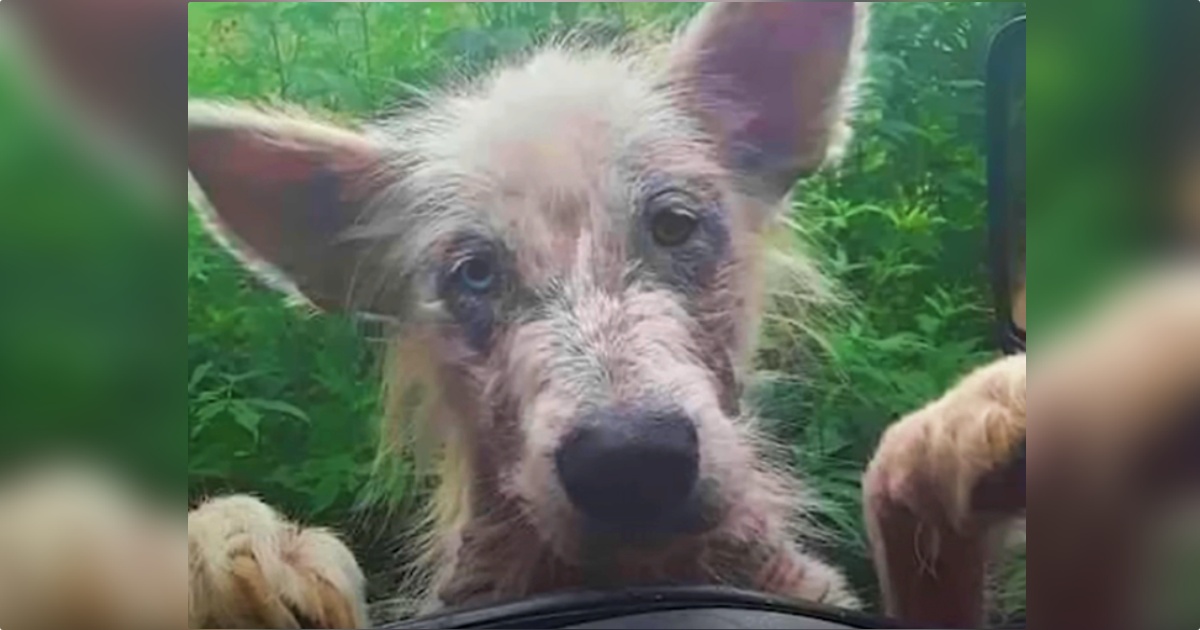
A man was arrested after a vehicle drove into a Filipino community festival on Saturday in British Columbia, in a “mass casualty incident,” the police said.

A driver plowed into a group of partygoers attending a Filipino street festival on Saturday evening in Vancouver, British Columbia, killing at least nine people, according to the local authorities.
Vancouver police said earlier that they were investigating a “mass casualty incident” at a neighborhood block party. The police said they had taken “a lone suspect” into custody at the scene: the driver, a 30-year-old Vancouver man.
Prime Minister Mark Carney said that another 20 people had been injured in what he described as a “car-ramming attack.”
Investigators had ruled out terrorism as a motive, Vancouver police said in an email, but they did not offer further details. Mr. Carney said that federal national security officials “do not believe that there is any active threat to Canadians.”

Photographs published by news agencies showed what appeared to be a black SUV with significant damage to the front of the vehicle, and its airbags deployed.
“At approximately 8:14 p.m. on April 26, a man drove into a large crowd of people attending the Lapu Lapu Day Festival near East 43rd Avenue and Fraser Street,” the Vancouver police said in a post on social media. The annual event celebrates Datu Lapu Lapu, a national hero in the Philippines.
“As of now, we can confirm nine people have died after a man drove through a crowd at last night’s Lapu Lapu Festival,” the police said in another post on social media early Sunday. “Our thoughts are with all those affected by this tragic incident.”

In a news conference, Steve Rai, the interim police chief, did not address a possible motive for the incident, but said the driver had been known to the police. Members of the crowd had subdued the man before officers got to the scene, he said.
Image

The incident occurred less than 48 hours before federal elections were set to take place in Canada. When asked by reporters whether the incident was related to the elections, Mr. Rai said, “I don’t know anything about that.”
Underscoring the police’s initial assessment that the attack was an isolated event, the police will allow a 10-kilometer run that drew more than 45,000 entrants last year to go ahead on Sunday.
The incident occurred just as Apl.de.ap, a Filipino American rapper and a founding member of the Black Eyed Peas, had finished a concert performance at the festival on the grounds of a high school.
Alan Kane, a witness, told CBC Radio that just before the attack, the crowd on the street where it occurred was “wall to wall” and lined up for food trucks. He said that it appeared that the street was blocked to traffic only by plastic barriers.
Several witnesses told Canadian news outlets that those barriers had been pulled back before the incident. Kris Pangilinan, who was selling clothing at a booth, said that some cars and trucks had been allowed into the crowded street to allow vendors to pack up their stands. The Audi SUV, he said, had initially moved cautiously into the crowd before rapidly accelerating, knocking down victims.
“It looked like we literally in a war zone,” Mr. Pangilinan told the CBC.
Other witnesses said the driver tried to run away before being subdued by bystanders.

This was the first mass killing involving a vehicle in Canada since 2021, when a far-right extremist drove a pickup truck into five members of a Muslim family in London, Ontario, killing four of them. A judge ruled that the man was motivated by white supremacist ideology and deemed the killings to be an act of terrorism.
In recent years, police forces in Canada have regularly blocked roads leading to venues hosting large crowds with snowplows or gravel-filled dump trucks, a measure that did not appear to have been taken in Vancouver.
“Last night, families lost a sister, a brother, a mother, a father, a son or a daughter,” Mr. Carney told reporters in Hamilton, Ontario. “Those families are living every family’s nightmare.”
Addressing Filipino Canadians, he added: “I join all Canadians in mourning with you. I know Canadians are united with you.” ”
Mr. Carney canceled some of his public events scheduled for the final day of campaigning on Sunday, but he appeared to be continuing with plans for a cross-Canada tour that would conclude Sunday evening in Vancouver.
Vancouver’s mayor, Ken Sim, said he was “shocked and deeply saddened by the horrific incident.”
Vancouver prides itself on being a diverse, multicultural city, with more than half of its residents identifying themselves as a “visible minority,” according to 2021 census.
Lapu Lapu Day is an annual celebration in the Philippines, marking the memory of Datu Lapu Lapu, who stood up against Spanish colonization. In Vancouver, the festival was established as an annual event in 2023.
President Ferdinand R. Marcos Jr. of the Philippines said in a statement on Sunday that he was “completely shattered to hear about the terrible incident” in Vancouver, and he expressed his “deepest sympathies” to the families of the victims.

Last day of Canada election campaign jolted by Vancouver attack
Canadian leaders made their final push for votes Sunday, one day before an election dominated by President Donald Trump’s policies, but rattled in the campaign’s final hours by a deadly car-ramming attack in Vancouver.
Prime Minister Mark Carney, the Liberal Party leader, is favored to beat Conservative leader Pierre Poilievre in Monday’s vote, but polls show the race has tightened in recent days.
The prime minister briefly paused his campaign schedule on Sunday to address the nation after a driver plowed into a crowd at a Filipino street festival in the west coast city, killing nine people.

Carney, a 60-year-old father of four, teared up as he voiced support for those affected by the “nightmare” attack, but said there was no indication of an ongoing “active threat to Canadians.”
A 30-year-man has been arrested by Vancouver police, who have ruled out terrorism as a motive.
Poilievre, appearing alongside his wife at a church in the election battleground city of Mississauga west of Toronto, condemned the attack as a “senseless act of violence.”
“Our hearts are with you today. All Canadians are united in solidarity with the Filipino community,” Poilievre said.

The Vancouver attack briefly shifted the nation’s focus away from Trump, whose trade war and threats to annex America’s northern neighbor have outraged Canadians.
Polling consistently shows that Canadians believe Carney — a former investment banker who also led the central banks of Canada and Britain — is the strongest candidate to take on Washington.
“This is an existential issue that we’re facing,” retired Ottawa resident Brian Carr told AFP on Sunday, referring to US government hostility.
Carr, 79, said he was supporting Carney because the Liberal leader “has demonstrated throughout his career that he is capable of leading and dealing with financial issues.”
Julie Dunbar, a 72-year-old Ottawa resident, told AFP she was impressed by Carney’s “experience on the international stage.”

Since replacing Justin Trudeau as prime minister on March 14, Carney has sought to convince voters that his resume has prepared him to lead Canada through a trade war and respond to tariffs that are pinching key sectors like auto and steel.
– Change coming? –
Poilievre, a 45-year-old who has been in parliament for two decades, has worked to keep the focus on living costs that soared during Trudeau’s decade in power, arguing Carney would bring a continuation of what he calls failed Liberal governance.
Addressing a boisterous crowd of supporters in the northern Ontario nickel mining city of Sudbury late Saturday, before the Vancouver attack, Poilievre promised “change is only a few days away.”
“Every single day I meet young couples in their 30s who believe they will never be able to afford to have kids because they have no home in which to raise them,” the Tory leader said.
“It was not like this before the lost Liberal decade.”
At the start of the year, Poilievre appeared on track to be Canada’s next prime minister.
His party led the Liberals by more than 20 points in most polls on January 6, the day Trudeau announced his plans to resign.
But the Trudeau-for-Carney swap, combined with nationwide unease about Trump, has transformed the race.
The public broadcaster CBC’s poll aggregator on Sunday put the Liberal’s national support at 42.8 percent, with the Conservatives at 38.8 percent.
– Provincial battles –
As with US elections, national polling numbers may not predict a result.
When voting closes on Monday, Conservatives will be closely watching the performance of the left-wing New Democratic Party and the separatist Bloc Quebecois.
In past Canadian elections, strong NDP performances in Ontario and British Columbia, and a good showing by the Bloc in Quebec, have curbed Liberal seat tallies.

But polls show both smaller parties could be headed for major setbacks as swing voters flock to the Liberals, who they trust to confront the unpredictable threats of Trump’s second term.
Canada’s parliament has expanded to 343 seats, meaning 172 are needed for a majority.
Trudeau and the Liberals held a majority following the 2015 vote but have governed with minorities in parliament since 2019.
bur/bs/sst
Who’s who in Canada’s federal election

Canadians will head to the elections on 28 April, with polls suggesting a tight race between the ruling Liberals and the opposition Conservatives.
While Canadians don’t vote for prime minister directly, the leader of the party that wins the most seats will traditionally become head of government.
It will be the first election in a decade without former Prime Minister Justin Trudeau on the ballot, and the frontrunners in the race are Liberal leader Mark Carney and leader of the Conservatives, Pierre Poilievre.
Here is a breakdown of the leaders of Canada’s major political parties.
Liberal Party leader Mark Carney

Carney, 60, is the incumbent prime minister of Canada, but he has only been on the job for a few weeks.
His party overwhelmingly chose him – with more than 85% of the vote – to succeed Justin Trudeau as Liberal leader in early March. He became prime minister shortly after, following Trudeau’s resignation.
For many in Canada and the UK, Carney is a familiar face. He was head of both the Banks of Canada and England, serving at the former during the 2008 financial crash and the latter during Brexit.
He was born in Fort Smith, Northwest Territories, making him the first Canadian prime minister from the north. Carney later grew up in Edmonton, Alberta, before he attended Harvard University and then Oxford, where he studied economics.
Carney is hailed for his financial expertise. He has also taken a defiant stance against US President Donald Trump, vowing retaliation against his tariffs and stating that Canada will never become the 51st US state.
But Carney is politically untested. He has never been elected to public office in Canada, and this general election will be his very first.
He is not as fluent in French as his opponents, though that has yet to be a liability among voters who feel strongly about preserving Canada’s French-speaking heritage, especially in the province of Quebec.
He has faced some criticism for taking multiple breaks during the campaign – amid a trade war with the US – to focus on his role as prime minister.
Conservative leader Pierre Poilievre

Poilievre, 45, originally hails from Calgary, Alberta. He has been in Canadian politics for nearly two decades – first elected to the House of Commons at age 25, making him one of the youngest MPs at the time.
Since then, he has consistently advocated for a low-tax, small government in Canada.
He is known for his confrontational style of politics. In recent years, Poilievre tirelessly attacked the Liberals and Trudeau, saying that their “disastrous” and “woke” policies have worsened the quality of life in Canada, while promising a return to “common sense politics” if his party were to form government.
It is a message that has resonated with many Canadians who have been worried about the country’s housing crisis, stagnant wages and high cost of living.
Poilievre led in national polls from mid-2023 until this March, and analysts had projected a near-certain win for his party in the upcoming election.
But a series of events – Trudeau’s resignation, Trump’s inauguration, and the rise of Carney as Liberal leader – has made this election a much tighter race.
Poilievre has been criticised for his populist style of politics and has drawn comparisons to Trump at a time when Canadians have rejected the US President’s tariffs and his rhetoric that Canada should become the “51st state”.
Poilievre has sought to shift his messaging, distancing himself from Trump and vowing to put “Canada first”.
“I have a completely different story from Donald Trump,” he said in a recent media appearance, highlighting his modest background.
Trump himself has said that Poilievre is not “MAGA enough”, though the Conservative leader has been praised by Trump ally and tech titan Elon Musk.

The Bloc Québécois is a Quebec sovereignist party that only runs candidates in the French-speaking province, meaning its leader is unlikely to become Canada’s next prime minister.
Still, they are a key player in Canadian elections, and their popularity in Quebec could determine the fate of the other major parties looking to form government.
Blanchet has led the party since 2019. He is known for his frankness, and has called Trump’s 51st state rhetoric nonsense.
“It’s enough jibber-jabber,” Blanchet said during an address on Trump’s tariffs last month in Montreal. “We can say whatever we want, but that doesn’t mean we can do whatever we want.”
On domestic issues, Blanchet has pushed for Quebec to diversify its trade partners, and has asked for a prominent seat at Canada’s economic planning table.
He has said he wants Quebec to be a strong ally with Canada in trade talks with the US.
Quebec – with a large aluminium industry – has been hit hard by the US tariffs of 25%.
Still, polling indicates the Bloc – who went into the election with 33 seats in Parliament – have been trailing behind the Liberal Party in Quebec.
CBC’s poll tracker suggests the Liberals are polling at around 43% in the province, and the Bloc around 23%.
Blanchet has suggested that the appetite for an independent Quebec will “come roaring back” when and if the US-Canada relationship stabilises.
New Democratic Party leader Jagmeet Singh

Singh, 46, is leader of the NDP, a left-leaning party that traditionally focuses on worker and labour issues. He made history in 2017 when he became the first ethnic minority and practicing Sikh to lead a major political party in Canada.
In 2019, the former criminal defence lawyer was elected as an MP in a British Columbia riding, where he has served in public office since.
The NDP had helped the Trudeau Liberal government keep its hold on power since 2021, providing needed votes in Parliament in exchange for support on progressive legislation like dental benefits for lower-income families and a national pharmacare programme covering birth control and insulin.
But in late 2024, Singh tore up that “supply and confidence” agreement, after Trudeau’s cabinet directed its industrial relations board to impose binding arbitration to end a work stoppage at Canada’s two largest railways.
At the time, Singh had said that the Liberals “let people down” and didn’t “deserve another chance from Canadians”.
But his party has struggled to shore up support. Polls suggest that only 8.5% of Canadians nationally intend to vote for them as of mid-April.
A big question will be whether the NDP will be able to retain the number of seats they occupy in the House of Commons and maintain official party status.
In the early 2010s, the party had enough support to form the official opposition, meaning it was the party with the second-most seats in Parliament. By 2021, their seat number had shrunk to 24 out of 338.











:max_bytes(150000):strip_icc():focal(719x422:721x424)/bill-hayes-days-of-our-lives-060823-1-f0eb80e127124e248aeadfe38fc88f09.jpg?w=1200&resize=1200,0&ssl=1)






:max_bytes(150000):strip_icc():focal(749x0:751x2):format(webp)/firefighters-recue-dog-that-fell-in-icy-pond-1-010226-2239db48a5894b2ca6ea50c805da048f.jpg?w=1200&resize=1200,0&ssl=1)
:max_bytes(150000):strip_icc():focal(749x0:751x2):format(webp)/Isabel-Klee-122225-43535fbd50104e9e8711da887b91ee58.jpg?w=1200&resize=1200,0&ssl=1)












:max_bytes(150000):strip_icc():focal(587x7:589x9)/hilary-duff-1-8885477a9c0e468782157a05b32cb221.jpg?w=1200&resize=1200,0&ssl=1)
:max_bytes(150000):strip_icc():focal(700x500:702x502)/Mickey-Rourke-TEATRO-Even-Summer-White-Affair-041425-01-dda588030a524ffb88242f46d853a6da.jpg?w=1200&resize=1200,0&ssl=1)





:max_bytes(150000):strip_icc():focal(722x378:724x380):format(webp)/farmington-hills-deliver-baby-040924-2-ffd1c156ebc647d6977e889eb9405d6f.jpg?w=1200&resize=1200,0&ssl=1)

:max_bytes(150000):strip_icc():focal(658x345:660x347):format(webp)/nacho-the-dog-tout-10212024-027bc33d675c4321b7d23a1c9b0d1188.jpg?w=1200&resize=1200,0&ssl=1)
:max_bytes(150000):strip_icc():focal(749x0:751x2):format(webp)/Noel-the-dog-090224-d33b921e95514585ab5564f64baf8397.jpg?w=1200&resize=1200,0&ssl=1)
:max_bytes(150000):strip_icc():focal(672x469:674x471)/cats-uhaul-7125-91f98aa63d0a41f4aa06508720df1702.jpg?w=1200&resize=1200,0&ssl=1)
:max_bytes(150000):strip_icc():focal(1125x315:1127x317):format(webp)/101-Dogs-Found-Crammed-in-Cages-in-Unassuming-NC-Home-060925-c0c6cbd2939948e88bb0942bc8a707fa.jpg?w=1200&resize=1200,0&ssl=1)